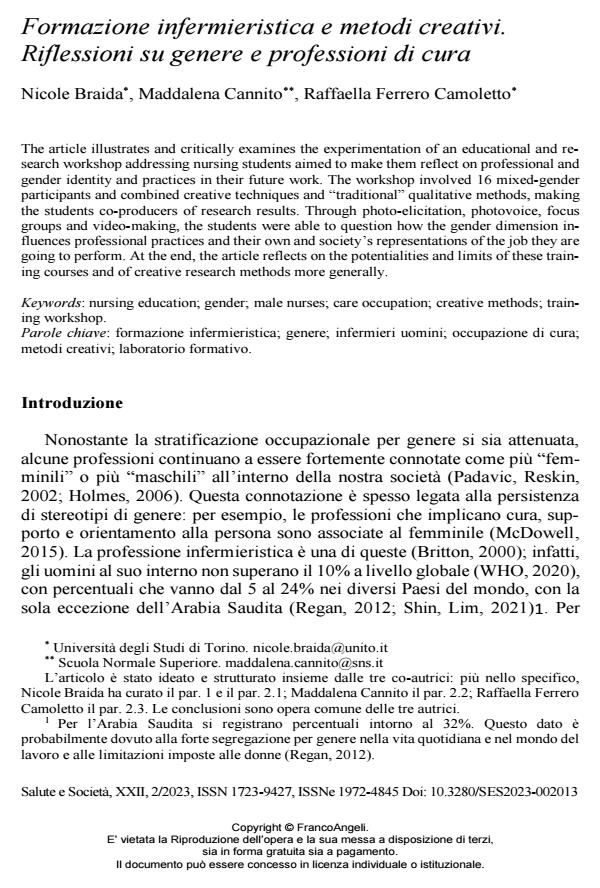Formazione infermieristica e metodi creativi. Riflessioni su genere e professioni di cura
Titolo Rivista SALUTE E SOCIETÀ
Autori/Curatori Nicole Braida, Maddalena Cannito, Raffaella Ferrero Camoletto
Anno di pubblicazione 2023 Fascicolo 2023/2
Lingua Italiano Numero pagine 12 P. 140-151 Dimensione file 366 KB
DOI 10.3280/SES2023-002013
Il DOI è il codice a barre della proprietà intellettuale: per saperne di più
clicca qui
Qui sotto puoi vedere in anteprima la prima pagina di questo articolo.
Se questo articolo ti interessa, lo puoi acquistare (e scaricare in formato pdf) seguendo le facili indicazioni per acquistare il download credit. Acquista Download Credits per scaricare questo Articolo in formato PDF

FrancoAngeli è membro della Publishers International Linking Association, Inc (PILA)associazione indipendente e non profit per facilitare (attraverso i servizi tecnologici implementati da CrossRef.org) l’accesso degli studiosi ai contenuti digitali nelle pubblicazioni professionali e scientifiche
The article illustrates and critically examines the experimentation of an educational and re-search workshop addressing nursing students aimed to make them reflect on professional and gender identity and practices in their future work. The workshop involved 16 mixed-gender participants and combined creative techniques and "traditional" qualitative methods, making the students co-producers of research results. Through photo-elicitation, photovoice, focus groups and video-making, the students were able to question how the gender dimension influ-ences professional practices and their own and society’s representations of the job they are going to perform. At the end, the article reflects on the potentialities and limits of these training courses and of creative research methods more generally.
Parole chiave:formazione infermieristica; genere; infermieri uomini; occupazione di cura; metodi creativi; laboratorio formativo.
Nicole Braida, Maddalena Cannito, Raffaella Ferrero Camoletto, Formazione infermieristica e metodi creativi. Riflessioni su genere e professioni di cura in "SALUTE E SOCIETÀ" 2/2023, pp 140-151, DOI: 10.3280/SES2023-002013